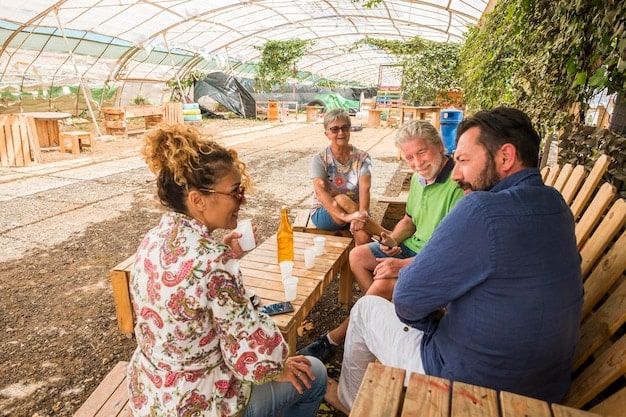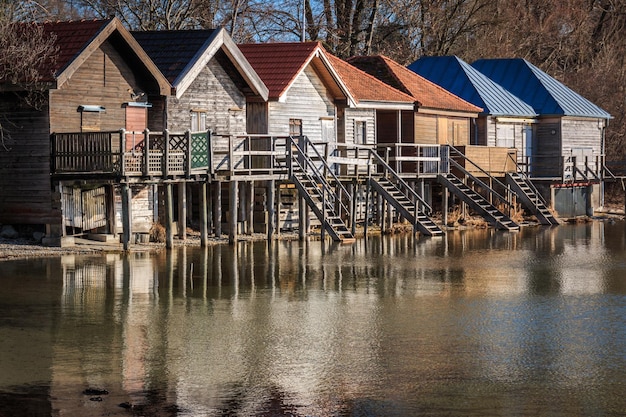Community Resilience in 2025: A 10-Year Climate Adaptation Plan

Community resilience in 2025 involves proactive adaptation to climate change through strategic 10-year plans, focusing on infrastructure improvements, social equity, and economic diversification to ensure communities thrive despite increasing environmental challenges.
As climate change intensifies, the need for robust community strategies becomes paramount. Community Resilience in 2025: Expert Insights on Adapting to Climate Change with a 10-Year Plan explores forward-thinking approaches to ensure our neighborhoods not only survive but thrive in the face of environmental challenges.
Understanding Community Resilience in the Face of Climate Change
Community resilience is more than just bouncing back from a disaster; it’s about proactively adapting to changing conditions and building stronger, more sustainable communities. In the context of climate change, this means understanding the specific vulnerabilities and risks facing a community and developing strategies to mitigate those risks.
Key Components of Community Resilience
Building a resilient community involves several key components that work together to enhance its ability to withstand and recover from climate-related shocks. These include:
- Infrastructure Improvements: Upgrading and fortifying infrastructure to better withstand extreme weather events.
- Social Equity: Ensuring that all members of the community, especially vulnerable populations, have access to resources and support.
- Economic Diversification: Creating a more resilient economy that is less dependent on climate-sensitive industries.
- Environmental Stewardship: Protecting and restoring natural ecosystems to enhance their ability to buffer against climate impacts.
By focusing on these key components, communities can build a strong foundation for resilience.
Developing a 10-Year Climate Adaptation Plan
A 10-year climate adaptation plan provides a framework for long-term action and investment in community resilience. This plan should be based on a comprehensive assessment of climate risks and vulnerabilities, and it should be developed in collaboration with community stakeholders.
Such plan must include:
- Risk assessment
- Stakeholder involvement
- Adaptation actions
- Monitoring and evaluation
Building a ten-year climate adaptation plan involves engaging local citizens, experts and decision-makers. By including them in the process, it’s more likely to satisfy local needs.

Expert Insights on Adapting to Climate Change
Experts in climate science, urban planning, and community development offer valuable insights into how communities can effectively adapt to climate change. Their perspectives highlight the importance of integrating climate considerations into all aspects of community planning and decision-making.
The Role of Climate Science
Climate scientists play a critical role in providing the data and analysis needed to understand the impacts of climate change on specific communities. This information can be used to inform the development of adaptation plans and to prioritize investments in resilience measures.
In addition, climate scientists collaborate with governments and other stakeholders in building strategies. These strategies can be adjusted to comply with local realities.
Urban Planning and Community Development
Urban planners and community developers are essential for translating climate science into practical strategies for building resilient communities. They can help to integrate climate considerations into land use planning, infrastructure design, and building codes.
Community Engagement and Partnerships
Effective climate adaptation requires strong community engagement and partnerships. By involving residents, businesses, and other stakeholders in the planning process, communities can ensure that adaptation measures are tailored to their specific needs and priorities.
Expert insights emphasize the need for flexibility and continuous learning in the face of climate change. Adaptation plans should be regularly reviewed and updated to reflect new information and changing conditions.

Infrastructure Improvements for Enhanced Resilience
Upgrading and fortifying infrastructure is a critical component of building community resilience. This includes investing in infrastructure that can better withstand extreme weather events, such as floods, droughts, and heat waves. Consider these improvements:
- Flood Control Measures: Constructing levees, dikes, and other flood control structures to protect communities from rising sea levels and increased rainfall.
- Water Management Systems: Implementing water conservation measures and developing alternative water supplies to cope with droughts.
- Energy Resilience: Building more resilient energy systems, such as distributed generation and microgrids, to reduce the risk of power outages during extreme weather events.
In addition to physical infrastructure, investing in green infrastructure, such as parks and green roofs, can also enhance community resilience by providing natural buffers against climate impacts.
Promoting Social Equity in Climate Adaptation
Climate change disproportionately affects vulnerable populations, such as low-income communities, people of color, and the elderly. Promoting social equity in climate adaptation means ensuring that these groups have access to the resources and support they need to cope with climate impacts.
This includes:
- Targeted Assistance: Providing targeted assistance to vulnerable populations to help them adapt to climate change.
- Equitable Access: Ensuring equitable access to resources and services, such as affordable housing, healthcare, and transportation.
- Community Empowerment: Empowering communities to participate in the planning and decision-making processes that affect their lives.
- Educational Programs: Implementation of educational programs to inform citizens.
Economic Diversification for a Resilient Economy
Communities that are heavily reliant on climate-sensitive industries, such as agriculture or tourism, are particularly vulnerable to the impacts of climate change. Economic diversification can help to reduce this vulnerability by creating a more resilient economy that is less dependent on any single industry.
Investing in Sustainable Industries
Investing in sustainable industries, such as renewable energy, green building, and sustainable agriculture, can create new economic opportunities while also reducing greenhouse gas emissions. These alternative sources reduce the stress on local economics.
Economic resilience involves:
- Green Jobs: Training programs and other support services to help workers transition to these new industries.
- Small Businesses: Supporting small businesses and entrepreneurs who are developing innovative solutions to climate change.
- Sustainable Tourism: Promoting sustainable tourism practices that minimize environmental impacts and benefit local communities.
Conclusion
Community Resilience in 2025: Expert Insights on Adapting to Climate Change with a 10-Year Plan means adopting a strategy to combat climate change. Investing in infrastructure improvements, promoting social equity, and fostering economic diversification, communities can ensure a sustainable future.
| Key Point | Brief Description |
|---|---|
| 🌱 Sustainable Infrastructure | Build infrastructure resilient to floods and droughts. |
| 🤝 Social Equity Focus | Ensure equitable access to resources and support for all. |
| 💼 Economic Diversification | Invest in green industries and sustainable practices. |
| 🌍 Community Involvement | Create partnerships that help local stakeholders. |
FAQ
▼
Community resilience refers to the ability of a community to withstand, adapt to, and recover from adverse situations like natural disasters or economic shocks. It involves social, economic, and environmental factors.
▼
Climate adaptation is crucial because climate change poses significant threats. Rising sea levels, extreme weather events, and shifting weather patterns are putting communities at risk.
▼
Examples of infrastructural changes are dikes, new water management systems and resilient energy sources. These resources can make urban areas more secure in the face of extreme changes.
▼
Economic diversification creates a resilient economy that is less dependent on climate-sensitive industries. This strategy involves investing in sources such as renewable energy and sustainable agriculture.
▼
Community engagement is crucial because it ensures that adaptation measures reflect local needs and conditions. It also promotes buy-in and cooperation, critical for successful implementation of initiatives.
Conclusion
Achieving true community resilience in 2025 involves a holistic approach that includes strategic planning, infrastructure investment, social equity, and community participation. By learning from expert insights and committing to proactive adaptation, communities can build a more sustainable and equitable future for all.


